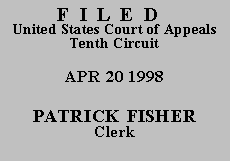

| UNITED STATES OF AMERICA,
v.
JOHN E. NAUGHTON |
No. 97-3300 (D.C. No. 96-CR-10070-02) |
The record indicates Mr. Helt, who made the devices and stored them on Mr. Naughton's property, and Mr. Naughton originally were indicted as co-defendants. Mr. Naughton entered a plea agreement under which the charges in the indictment were dismissed against him, and an information to which he pled guilty was substituted.
During the course of the hearing on change of plea, the prosecutor advised the court that a pipe bomb had been found in Mr. Naughton's house, and in his garage a "large box [which] contained a number of what we would call explosive devices" was also found. Both defendant and his counsel agreed this statement was accurate.
At sentencing, defendant maintained the exact number of devices in the box could not be determined; therefore, sentencing should be based upon the weight of the explosive material that was contained in the box. Doing so, it was argued, would result in a sentence range of zero to six months. The government did not produce any evidence, but the court recalled having just heard the evidence in Mr. Helt's sentencing in which the government's expert testified there were fifty-six devices in the box. Counsel made no objection to the court's taking notice of this testimony, but instead argued Mr. Naughton simply did not know that number. The court, notwithstanding, on the basis of his recollection of the accuracy of the testimony at Mr. Helt's sentence hearing, made a finding that the total number was fifty-six and imposed a sentence of ten months which was at the bottom of the guideline range.
On appeal, Mr. Naughton argues the prosecutor stated she could not tell how many devices were in the box; therefore, the district court's finding was tantamount to making Mr. Naughton a conspirator with Mr. Helt. On this basis, he urges we review the sentence de novo.
We, however, are guided by the long-standing principle that the district court's findings of fact on quantities for the purpose of sentencing will not be set aside unless they are clearly erroneous. See United States v. Richards, 27 F.3d 465, 468 (10th Cir. 1994). In light of the record, we cannot make that finding here.
AFFIRMED.
ENTERED FOR THE COURT
John C. Porfilio
Circuit Judge
*. This order and judgment is not binding precedent, except under the doctrines of law of the case, res judicata, and collateral estoppel. This court generally disfavors the citation of orders and judgments; nevertheless, an order and judgment may be cited under the terms and conditions of 10th Cir. R. 36.3.